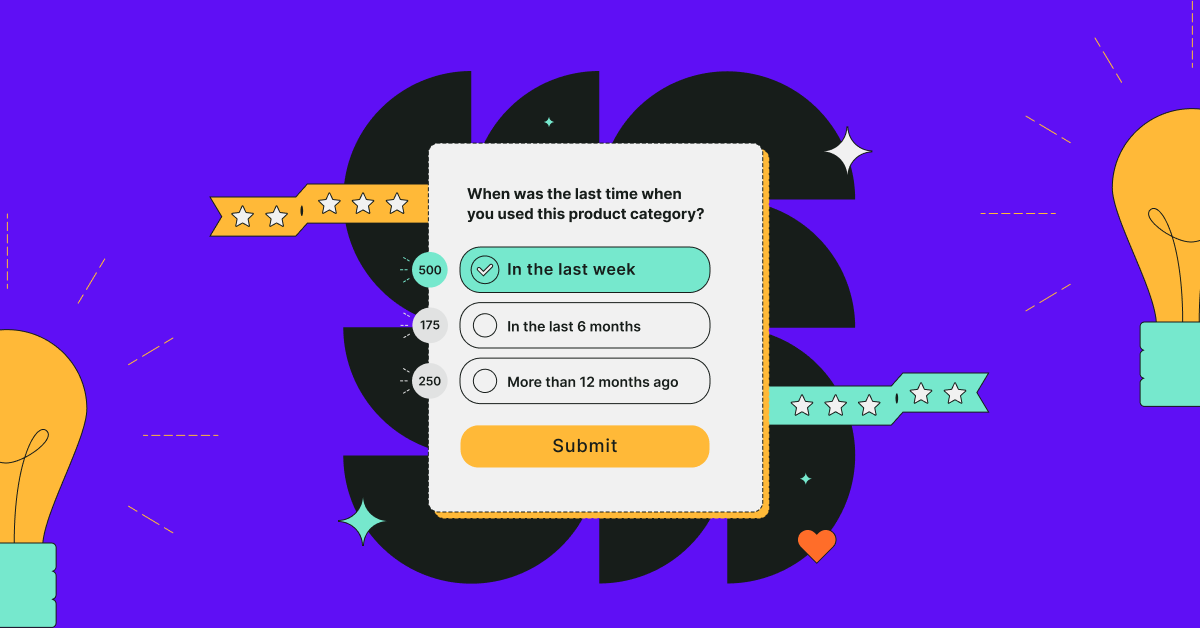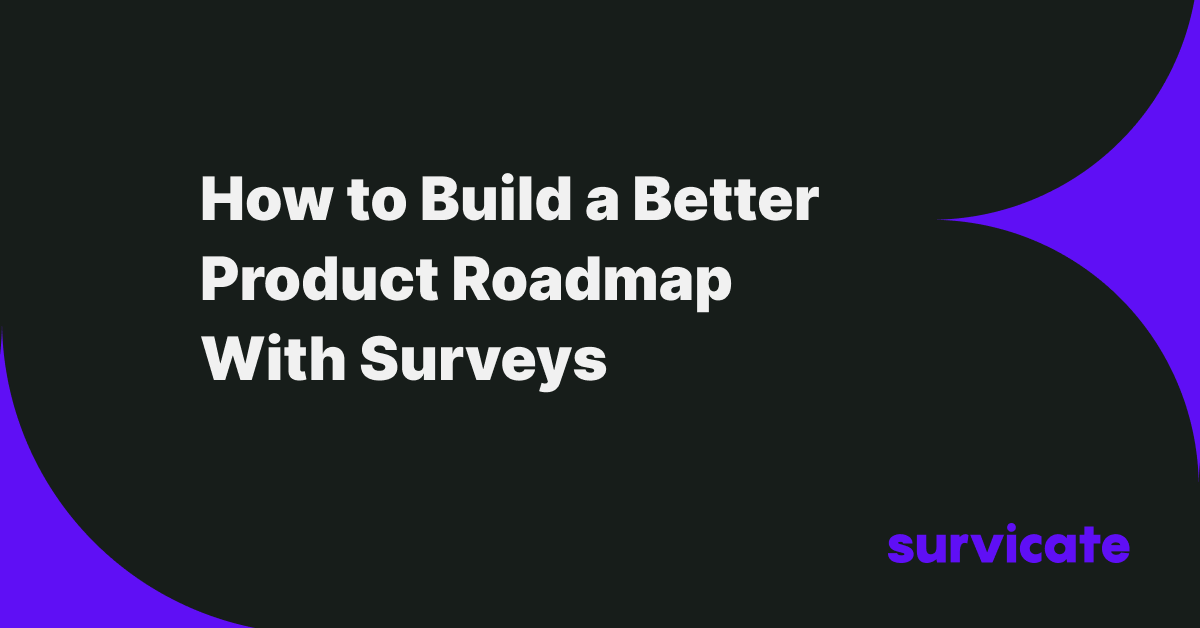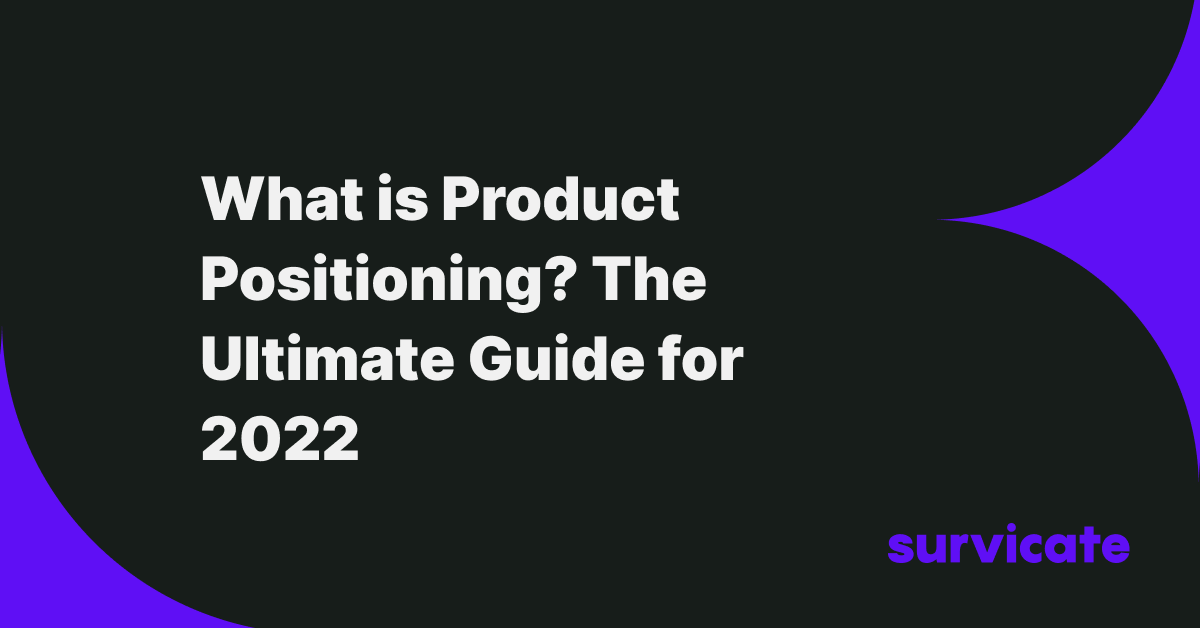What is the main source of your sales? Does anyone think that your website is not user-friendly? How is your brand perceived in the market?
Many entrepreneurs wrestle with these and many other questions on a day-to-day basis. Not only do they reveal how target audiences perceive a brand. They also help to find out how they discovered it and why they may be unsure about buying from it.
Sounds like information that you can use to up your eCommerce game, right?
.webp)
To get this highly valuable information and collect customer feedback, online businesses often perform brand awareness surveys. It makes perfect sense because if you want to build a positive brand image and sell to a specific audience, you should ask them what they’re looking for. Plain and simple.
Surveys can help you tailor-fit your brand to users' needs and boost customer satisfaction.
Free Brand Awareness Survey Template
Benefits of Survey Outreach
Online surveys are an excellent way to reach and engage with your target audience. By using surveys, brands can remain a step ahead in the market because they get access to consumer perceptions, preferences, needs, and issues.
Since the modern online marketplace is customer-centered, this information is pure gold.
Let’s summarize the benefits of survey outreach so you know some of the most important goals that a brand awareness survey can help you to achieve.
Reach your target audience
Wouldn’t you just love to talk to your customers in person? They can share their customer experience with your brand and give you answers to how you can improve it. Well, that’s what a brand survey seeks to achieve.
Surveying your customers means getting direct input from your target audience. Many of your customers are ready to give the answers you need to improve your business. After all, a lot of people use review websites to describe their experience with brands.
Measure customer satisfaction
Are your customers satisfied with your products, services, and overall brand experience? Is there a lot of repeat buyers? By conducting customer satisfaction surveys, you’ll be able to answer these questions. You'll also determine how many customers are actually satisfied with your brand experience.
As a result, you’ll get data needed to increase the number of repeat buyers. Since about 80 percent of profits tend to come from just 20 percent of customers – the repeat buyers – knowing how to improve retention is critical.
Identify the source of most of your sales
While Google Analytics is a pretty good tool to track where your traffic is coming from, there’s a good chance that you will miss where some of the customers first heard about you. After all, how can Google Analytics determine that brand discovery happened through a referral or word-of-mouth?
With this in mind, let’s now find out how to write brand awareness surveys.
Brand Awareness Survey Writing Tips
To collect a maximum output and keep the overall survey experience positive for customers. You need to make it concise, non-threatening, and simple. Since 80 percent of customers have abandoned a survey halfway through, you need to make sure that yours is not unnecessarily lengthy, uninviting, and too complex.
Here’s what you need to follow to create a good brand survey.
Tip #1: Open with your credentials
While it might seem pretty obvious at first, this step is often skipped by companies who want to get straight to the point. Think of it as an introduction to your survey that seeks to build confidence for users.
Explain why you’re asking, and let them know how you’ll use their answers and personal data (if applicable).
Here’s what to cover in the intro:
- The name of the company that conducts the survey or the name of the person representing it
- The main purpose of the survey
- How much time will this survey take
- Relevant instructions
- If the answers are tracked or confidential.
Here’s an example of an introduction that follows these instructions, crafted especially with focus groups in mind (i.e. respondents, who might have not known your brand so far):
COMPANY NAME is a startup looking to learn more about the coffee drinking habits of Millennials. We’d love to hear how many cups of coffee they drink every day, the reasons why they drink it, what types of coffee they prefer, and when they drink it. The answers are confidential and will be helpful to us to improve our products and prioritize some flavor tastes and features.
We estimate that it will take you around 3 minutes to complete the survey. The survey is closed on April 12, and you can take it only once. Questions marked with (*) are mandatory. Feel free to ask any questions and provide your suggestions to our email.
We really appreciate your time!
This way, you’ll build the confidence of the viewer and encourage them to answer your questions. Remember to be honest and let them know about everything survey takers need to know to trust you.
Tip #2: Categorize your questions
Any survey has questions that pertain different knowledge areas. For example, if we use the above example of a survey of coffee drinking habits of millennials, we can differentiate the following question categories:
- Drinking habits
- Taste preferences
- Perceived benefits of drinking coffee.
Each of these categories contributes to the main purpose of the survey and contains multiple questions. To make data collection and subsequent analysis easier, you can categorize questions in your surveys.
For example, you can place subheadings to identify certain groups of questions and let the survey taker know what they will need to answer.
Important! Since 80 percent of people said they’ve abandoned a survey halfway through, prioritizing the most important questions is often a good idea. For example, if a respondent begins the survey, answers several questions, and then leaves, chances are that you won’t get critical answers if you put them in the end.
So, one more way to categorize the questions is to group them in order of importance. In this case, critically important questions are placed in the beginning while such information as demographics are put in the end (unless your main purpose is to collect demographic data, of course).
Tip #3: Discourage neutral answers
Neutral answers are vague and have little to no value for businesses. So, it’s your job to minimize them in your survey. There have been numerous attempts to define the role of the neutral option in surveys.
10-20 percent of respondents typically are selecting the neutral option when it is included, compared to the same survey when it is not excluded.What this means is that the option provided an easy way out for the surveyed, who were less inclined to express their true position on a topic.In other words, a neutral option is not a good way to ensure the dependability of answers. So, to avoid having too many vague answers, minimize options such as “don’t know” and “neutral.”
Tip #4: Limit explanatory questions
These are often called open-ended questions because they cannot be answered with a simple “yes” or “no.” In other words, the respondent will have to write their answer out, which is something that a lot of people aren't keen on.
For example, a lot of people take surveys on a mobile device. In fact, Pew Research found that 27 percent of respondents take surveys on their smartphones, so typing explanatory answers may not be an easy experience for them.
Besides, some people may just get bored with typing and leave (and we know very well how many respondents abandon surveys halfway through).
So, to reduce the chance of many leaving your survey just because of a lot of typing that’s required, keep open-ended questions to a minimum. Instead, go for those that can be answered with “yes” or “no.”
Consider getting the help of professional writing tools like TrustMyPaper, too, to ensure that the questions are easy-to-read and don’t require long answers. For example, they may help you to convert open-ended questions to multiple choice questions or matrix questions.
Tip #5: Include contact information
If your survey seeks to get some suggestions from respondents by asking questions like “How can we improve your experience with our brand?”, then you need to include some contact information in case they would like to make a suggestion directly as well.
Alternatively, as a Survicate user, you can also set automatic followup questions for any answers that you’d like them to elaborate further on.
Also, some respondents – especially if it’s a publicly available survey – might look for contact information for other reasons, such as to find your website. So, if you’re implementing a survey on a third-party platform, be sure to help them find you quickly.
Tip #6: Test your survey before running
Putting your survey to a test is like revising an essay to eliminate any errors. So, when you’ve set a purpose for your survey, wrote all the questions, defined the ways of collecting the responses, don’t share it yet. Check it for the following instead:
- Time to complete. Does the real time required to complete the survey correspond to the time that you’ve indicated in the intro?
- Mobile-friendliness. Since so many people take surveys on mobile devices like smartphones and tablets, you need to preview your own on different platforms such as iOS and Android to ensure that respondents won’t discover any preventable design-related issues
- Proofread the copy. Mistakes like spelling and grammar will make you look amateur and damage your reputation. Avoid them by proofreading your survey copy multiple times and reading it out loud to detect errors easier.
.webp)
Conclusion
Brand awareness surveys are a great way to get highly valuable information about how people view your brand and what could convince them to buy from you.
Follow these tips on writing and structuring your survey and you’ll be ready to start collecting useful information.
Here's a free Brand Awareness Survey Template you can use to test these tips in real life within seconds! You might also like our other survey templates.
Register to Survicate right now and enjoy a 10-day free trial with unlocked Business plan features

.webp)






.svg)
.svg)
.svg)

.svg)


.svg)







.svg)




.svg)

















.svg)






























.svg)

.svg)
.svg)

.svg)



.svg)






.jpg)
.svg)

.svg)







